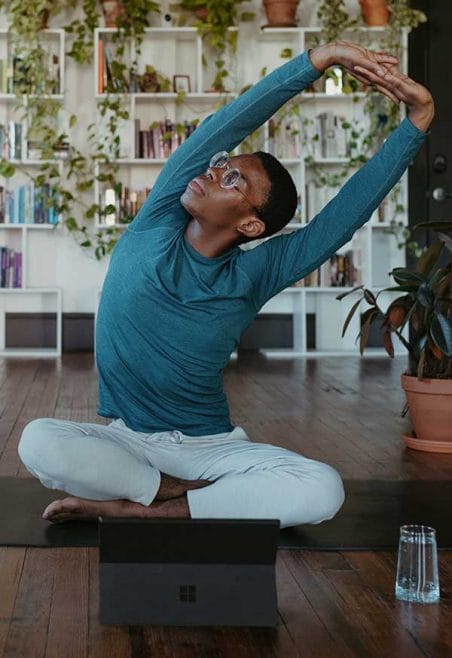
There are many reasons you might want to know how to sequence a warm up for a yoga class. You might be looking to freshen up your teaching practice, maybe introducing new poses. You might have 10 to 15 minutes of free time you’re looking to fill and mindful movement sounds just right. Or, maybe, you have begun your yoga teacher training and are looking for some inspiration. Either way, you’re in the right place. Warm ups are just as they sound; ways for us to find more space in the body for ease. Asana helps energy to flow more freely in the body and can help us to return to the present moment with our breath.
There are many ways to begin a warm up sequence. As a society, we spend a lot of time sitting down, whether at a desk or in a car, so keep that in mind when choosing the pose you’d like to start with. You might consider something grounding like child’s pose. There are many ways to add variation, such as relaxing the elbows down to the mat to rest the arms or bringing a block underneath the forehead. Supine, or lying on the back, is a great option, as well. For those with low back discomfort or weakness, keeping the soles of the feet on the mat can provide the support needed to find comfort. Standing in tadasana might even be what you or your students need. When warming up for a full length yoga class, you’ll want to spend some time in the beginning pose to sit with the breath. Allow the students, or yourself, time to arrive on the mat and in the space. You can invite the awareness inwards, towards the breath, using it as an anchor to the present moment. Spend as much time here as you’d like.
Next, you can begin to invite in movement. Your starting pose will determine what that looks like. From child’s pose, you could simply invite the students to inhale and rise into table top position to begin some cat and cow movements with the breath. If you chose something supine, knees into chest for some rocking side to side for a lower back massage can be a good choice. This choice could also lead you to tabletop – begin to rock up and down on the spine until you gain enough momentum to come into tabletop by rolling forward on the shins. Tabletop position is a really great place to be for your warm up sequence as you have a lot of different options with support of the limbs to begin to awaken the muscles and make space. For example, you could focus on shoulders and move into thread the needle on each side. Puppy pose could follow and lead you into sphynx pose, on the belly. Once on the belly, there are several more ways to get into the shoulders or push up and back into tabletop or child’s pose.
Should you choose to start with a seated pose, say an easy seat, seated twists are a nice way to warm up the spine and shoulders. It’s important to note, should you include easy seat in your sequence, you should allow two rounds of your chosen flow while in easy seat to allow time for both of the legs to have a chance as the leg in front. This allows the body to be even. Lateral body movements are an option here, too. Inhaling the arms overhead and exhaling to right and left can allow for space in the ribs and a gentle twisting sensation in the spine. From your easy seat, you might choose to take a bit of a restorative hip opener and move into a bound angle pose. After your bound angle pose, you may choose to find your way into tabletop position to add anything else onto the warm up you’d like to.
Standing in tadasana opens a lot of doors, as well. You can take all of the same twists and stretches as we suggested in easy seat. Repeating forward fold to half way lift and back to tadasana is one option to warm up with flexion in the hips. Ragdoll, or a restful hanging over the legs, is usually a fan favorite. Here, you can invite in lots of variations with the arms, maybe even accessing the shoulder by sweeping the arms up and back to meet at the lower back.
Downward facing dog is a great place to end your warm up if you are preparing for a full length vinyasa or hatha class. From there, you can bring your students to the top of the mat to begin sun salutations. Otherwise, if you are practicing your warm up sequence as a stand alone sequence, you might want to allow time for a more supported and restful pose after downward facing dog. This could be a chid’s pose or it could look like finding your way down to your back for savasana. Rest after mindful breath to movement aids in integration so you’ll want to be sure to include time for doing so.
There are many different ways to utilize a warm up yoga sequence. You might even use your warmup sequence as a way to invite beginner’s into the experience of yoga. We encourage you to explore all the creative ways in which you can help yourself or your students begin to create space in the body and mind using the power of yoga!
